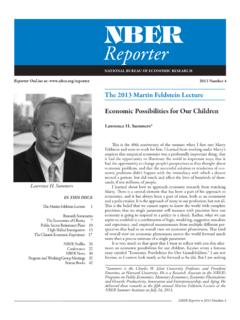Transcription of EY Africa 2030: Realizing the possibilities
1 Africa 2030: Realizing the possibilitiesThis publication marks a subtle change in emphasis for EY. Since we initiated our flagship Africa attractiveness programme in 2010, we have been among those at the forefront of promoting the African growth story and advocating for greater levels of investment into Africa . We have developed a robust data- and knowledge base to help provide quantitative substance to support the business case for remains an important task. Despite the clear evidence of sustained progress, there are many who remain sceptical about Africa .
2 It is important for us to continue to provide evidence of the continent s progress, so that decisions are driven by facts rather than often outdated perceptions. The first chapter of this report highlights some of this evidence, summarizing what for us have been some of the key drivers of the African growth story. It is clear to us too though that, despite the progress that has been made in Africa since the end of the Cold War and Apartheid, much work still needs to be done to realize Africa s vast possibilities .
3 The time is therefore right for us to begin to shift our focus towards the future of Africa . As we look forward over the next decade and beyond, our own scenario analysis suggests that a success story for Africa will be one that leads us on an inclusive, sustainable growth path. In the second chapter we begin to explore what it will take to achieve this success story, and we articulate five priorities for action that we believe will be most critical to a successful African future. The potential exists for us to be part of an African future that would have been virtually unimaginable a generation ago.
4 The reality though is that this future is neither inevitable nor will it happen without active participation and commitment from multiple stakeholders. We therefore need to create platforms and mechanisms for both dialogue and collaborative action. Since 2012, we have convened the annual Strategic Growth Forum Africa as one such platform for dialogue and collaboration among leaders in the private, public and social this report we also present the perspectives of a diverse group of leaders with interests in Africa .
5 Each one of them was invited to provide a point of view on what the future of Africa might look like, what the drivers of change and critical success factors are likely to be. The brief was intentionally broad in order to elicit a range of , the sense one gets from the various contributions is one of progress and optimism; that the changes we have seen over the past 15 years are sustainable, and will make Africa an international socio-economic focus in the coming is, however, tempered by notes of caution.
6 A consistent thread running through the contributions is the observation that intra-regional trade is substantially below what can be achieved. The fact is that legislation and regulation still act as blocks to cross-border trade- a stumbling block that has to be removed to promote African also receives attention, particularly the need to break down the barriers of traditional subsistence agriculture and then replace it with large-scale commercial operations capable of meeting the production objectives required by a continent in depth of human resources.
7 And the availability of a future pool of labour on a continent populated by young people, raised excitement and concern; excitement because of the availability of people to drive the African economy of the future; concern about the delivery of education and the creation of skills appropriate to growing , the dominant view is that change is real. Economic growth and development will continue, and will be driven by a burgeoning African middle class with growing levels of discretionary income, growth in local entrepreneurship and investment in bridging the infrastructure of the key factors, mentioned by many, is the proliferation of mobile telecommunications, the convergence of technologies and the ability for these to drive forward financial inclusion, government efficiency, trading opportunities, and the delivery of education.
8 Healthcare and other services to urban and rural populations. Whatever the differences or similarities in perspective, the point is that active dialogue and collaborative action is required for us to realize Africa s possibilities . All of us with a passion for Africa are presented with a wonderful opportunity to work together to make a genuine difference. The time and place for Africa s future is here and now. We are the generation of leaders that have to seize the opportunity and make it 1 Africa s rise is real1 Africa 2030: Realizing the possibilitiesHowever, after a decade of strong economic growth post the millennium, it was clear that an exciting shift was happening in Africa .
9 This shift was exemplified by the contrast between 2 covers of The Economist magazine published 11 years apart: in 2000, the magazine described Africa as the hopeless continent ; in 2011, it released an issue entitled Africa rising with a picture of a boy flying a rainbow-coloured kite the shape of the the past 4 years, EY s Africa attractiveness reports have highlighted the continent s steady rise. Our research, which includes investor surveys and analysis of foreign direct investment (FDI) and broader socioeconomic trends, has helped to provide some quantitative substance to the growing perception that African markets offer an exciting growth and investment the past few years a new African narrative has emerged.
10 For decades, postcolonial Africa has commonly been portrayed as a basket case: economic stagnation, political instability, armed conflict, poverty, famine and disease were the key themes. Since The Economist regrettably labelled Africa the hopeless continent a decade ago, a profound change has taken hold. Labour productivity has been rising. It is now growing by, on average, a year. Trade between Africa and the rest of the world has increased by 200% since 2000. Inflation dropped from 22% in the 1990s to 8% in the past decade.
















